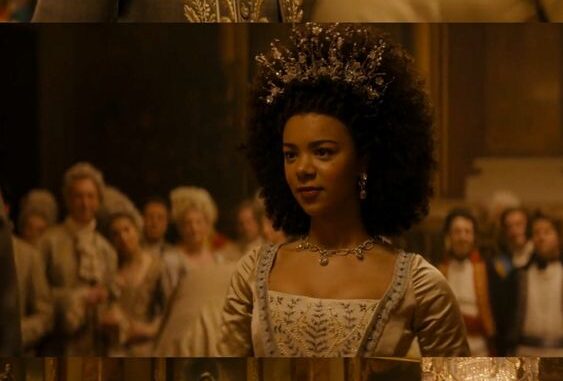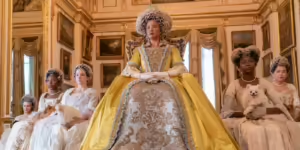
Which parts of the fan-favorite monarch are fact vs. fiction?
When the first season of Bridgerton dropped on Netflix, a handful of characters quickly rose to the status of fan favorites in the eyes of the audience. After all, who could resist the charm of the Duke of Hastings (Regé-Jean Page), the anxiety-inducing energy of Penelope Featherington (Nicola Coughlan), or Eloise Bridgerton’s (Claudia Jessie) rebelious streak? But in this pantheon of beloved characters, there is one that stands the tallest: the keen-eyed and sharp-tongued Queen Charlotte (Golda Rosheuvel), who earned her own show on the streamer just last year.
Produced by Shondaland, the same company responsible for Bridgerton, Queen Charlotte: A Bridgerton Story stars India Amarteifio as a younger version of the titular monarch. The show chronicles Charlotte’s rise to power and her marriage to King George III (Corey Mylchreest), as well as the beginnings of her friendship with Lady Danbury (Arsema Thomas). But while Queen Charlotte: A Bridgerton Story gives us insight into who the queen really is in the Bridgerton universe, how much of her story in both shows is actually true? Who was the real Queen Charlotte? Here are a few things you need to know about the Regency queen.
The Real Queen Charlotte Wasn’t Ready for Life at Court
Sophia Charlotte of Mecklenburg-Strelitz was born in 1744, in the northern German town of Mirow, in a small duchy of the Holy Roman Empire. She was the eighth child of Duke Charles Louis Frederick of Mecklenburg-Strelitz and Princess Elizabeth Albertina of Saxe-Hildburghausen, and, as such, her future wasn’t considered particularly promising. Little was taught to young Charlotte about the comings and goings of political life, and most of her education was devoted to domestic affairs. Thus, it must have been a real shock to 17-year-old Charlotte when she was thrown into the British court after her marriage to King George III, in 1761.

Just 22 years old at the time, George had just been crowned and was in dire need of a wife, as well as an heir. According to author Janice Hadlow, there was a mere six-hour-long interval between Charlotte’s arrival in England and her wedding ceremony. From 1761 to her death, in 1818, Charlotte would reign beside her husband as Queen of Great Britain and of Ireland. George would remain king for two more years after his wife’s passing, up until his own death in 1820. But even though their marriage was long-lasting and reported very affectionate, things for the young queen would soon get a lot harder than anyone could have anticipated. anticipated.
For starters, the queen had a pretty tough time with the producing heirs part of the job. Charlotte had a total of 15 children, of which 13 made it to adulthood. Being suddenly pregnant took a toll on the young monarch, who once wrote, according to an excerpt of Janice Hadlow’s The Strangest Family: The Private Lives of George III, Queen Charlotte and the Hanoverians quoted by the Smithsonian Magazine: “I don’t think a prisoner could wish more ardently for his liberty than I wish to be rid of my burden and see the end of my campaign. I would be happy if I knew this was the last time.” At the time, she was pregnant with her fourteenth child, Prince Albert. The deaths of two of her children due to smallpox also had a huge impact on the queen. According to Lady Charlotte Finch, who served as Prince Alfred’s nanny, Charlotte “cried greatly” after her son’s demise in 1782. Six years later, the queen and king would suffer the loss of Prince Octavius.
During the Regency Period, Queen Charlotte Became Her Husband’s Guardian
But the worst has yet to come for Queen Charlotte. As England entered a period that is now considered by many one of the most romantic in history, the queen braced herself to face the biggest challenge of her long life as a monarch. In 1765, King George had his first temporary bout of madness, of which the queen was kept entirely unaware. However, in that same year, a bill was passed stating that Charlotte would be named Regent in case the king became unable to rule. This changed in 1788, when George became sick again. The queen and her eldest son, Prince George, disagreed publicly about who should be made Regent. In the end, the Prince of Wales came out victorious. In 1811, when King George’s madness became permanent, it was his son who rose to the throne. Charlotte, on the other hand, was made her husband’s guardian, a position she occupied up until her death.
However, her relationship with King George was forever changed by his mental illness. According to historian Catherine Curzon, during his episodes, the king made accusations of adultery against the queen and inappropriate comments about her attendants. Charlotte hid in fear of her husband after he physically assaulted their adult son, Prince George.
